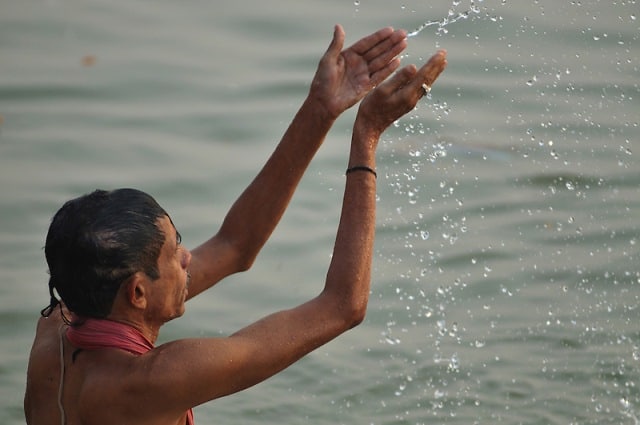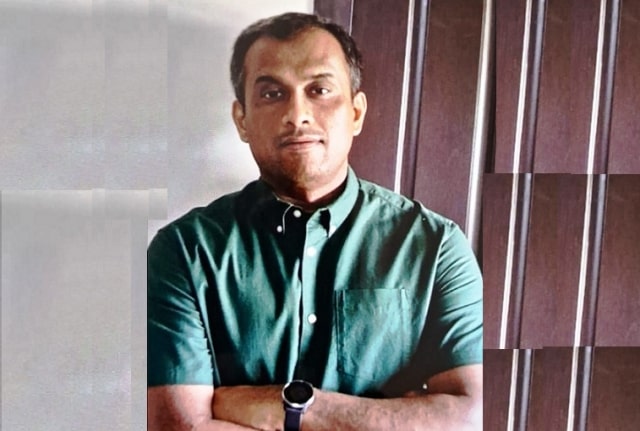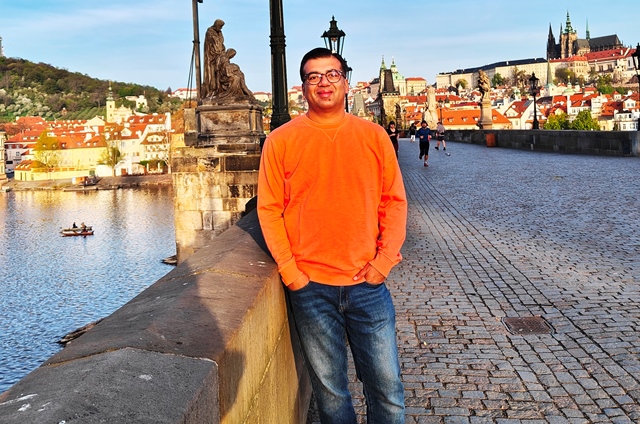
‘My Skin Itches After Every Holy Dip In Ganga’
Manoj Kumar, 40, a priest on the ghats of Ram Ganga in UP, says his skin itches after he takes a dip in the holy river. Kumar believes Namami Gange should involve all stakeholders it its plans.
In my 12 years as a priest (panda), I have seen that people often get contemplative in the presence of Ma Ganga (river ganges). I often try to make people contemplate more deeply and spare a thought for the environment and the irreversible damage we, humans are causing to our rivers, trees and other natural resources. I always make it a point to talk to my jajmans (clients) about how the environment (our rivers in particular) is getting polluted, in the little time I get to interact with them.
Every day, I sit on the ghats of River Ganga from morning till late in the noon. That Ganga and its tributaries remain clean is of great importance to everyone, but more specifically for us, because it is so closely connected to our ajeevika (livelihoods). When the Namami Gange Project was launched in 2014, the priests as well as the shraddhalus (devotees) had high hopes.
In the past five years, the water has definitely seems cleaner than before, but there’s still a lot of scope for improvement. I live in Bareilly, the tributary of the Ganga flowing here, that is, Ram Ganga needs more attention from the authorities. Every year, after Holi, the river starts drying up, but the authorities visit the ghats only during Jyaishtha Dussehra (also known as the Ganga Dussehra) in the month of June and Kartik mela in the month of November. I wish they would visit the ghats more regularly and communicate clearly with all the stakeholders involved.
Also, the authorities need to understand that just the physical cleaning of the river isn’t the solution, we need a more holistic approach. We need more safai karmacharis on the ghats, who can stop people from throwing the pollutants in the river. As a priest, I make it my duty to put all the leftovers from the puja (mainly biodegradable items) in a pit so that it can be composted. My fellow priests also try to practice this and we plan to do everything in our capacity to keep the ghats clean. The government should create mass awareness about why people should not throw the leftover material that is generated during home pujas into rivers and what they can do instead. This way a huge amount of pollutants can be stopped from entering the rivers.
Apart from all this, the Namami Gange project should also look at building infrastructure to fulfil the basic needs of the pilgrims as well as the people who work at the ghats. There is an urgent need for changing rooms for women so that our mothers and sisters can perform their pujas comfortably. Washrooms also need to be built in large numbers, but at quite a distance from the ghats. We need a tree plantation drive too. Even in the dead heat of Indian summers we have to sit under the Sun; there’s no shade or cool breeze. Even if we want to wash our faces or want to take a dip to ward off the excess heat, we can’t do it very regularly because our skin starts itching from the river water.
My children, who are studying in another town, often come to visit me. Whenever, they are here, they update me about what other countries are doing for the environment. They have told me all about climate change and how it is slowly killing our planet. Polluted rivers too, can contribute to climate change, leading to extreme weather events. We don’t have much time and we need to put all our collective intelligence, heart and soul into cleaning our country’s most precious natural resource, the river Ganga, our Ganga Maiya.



